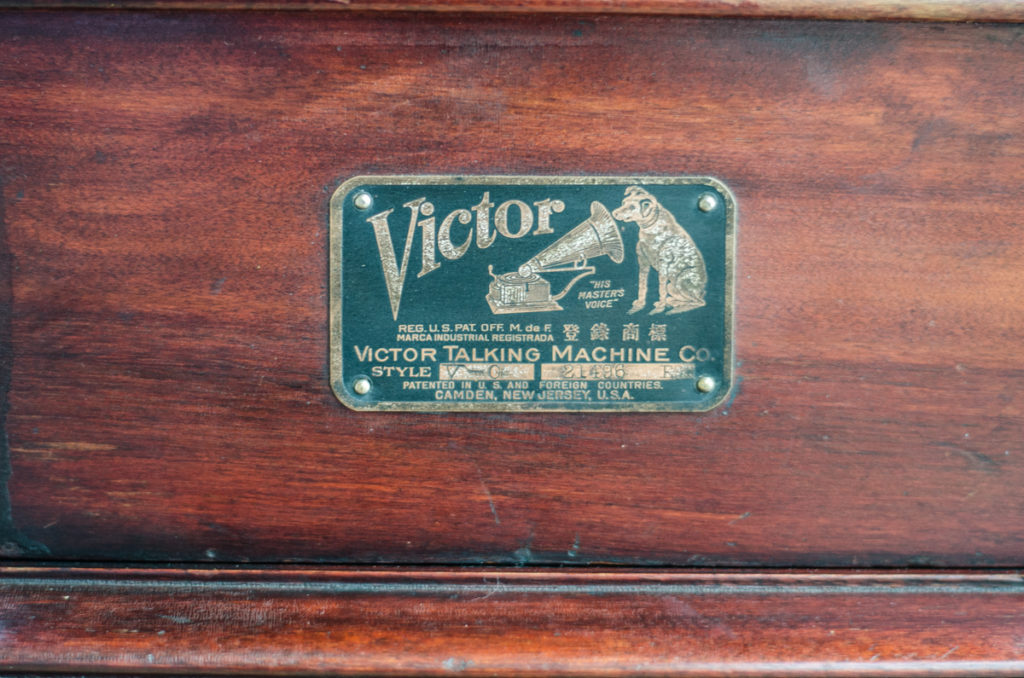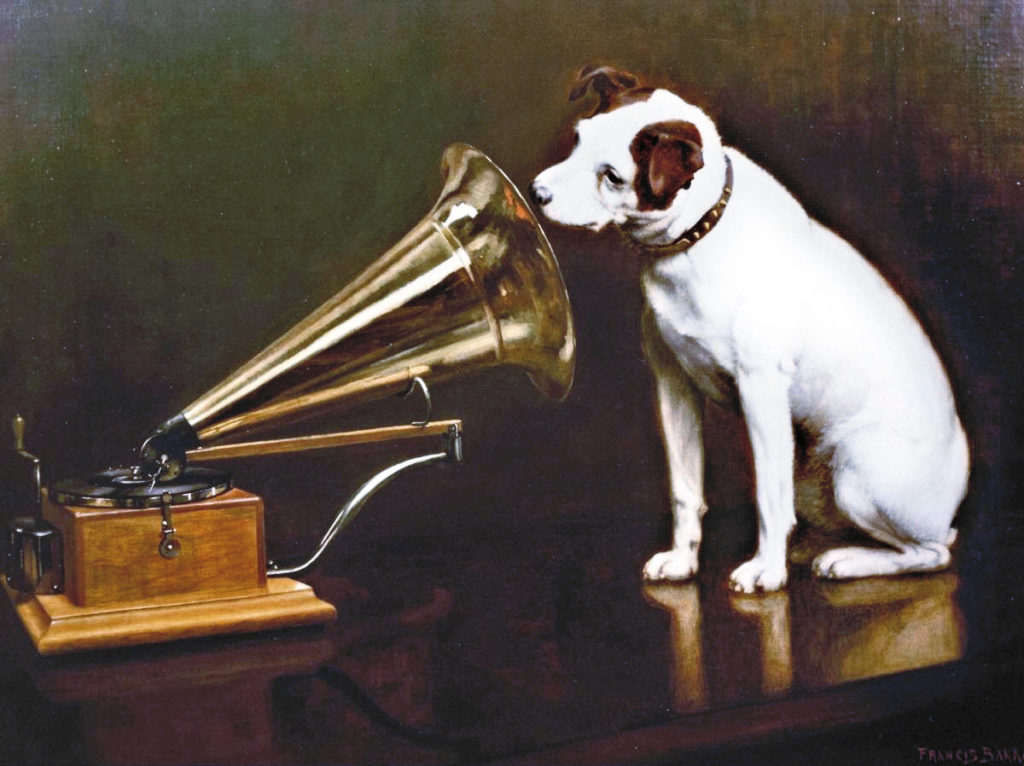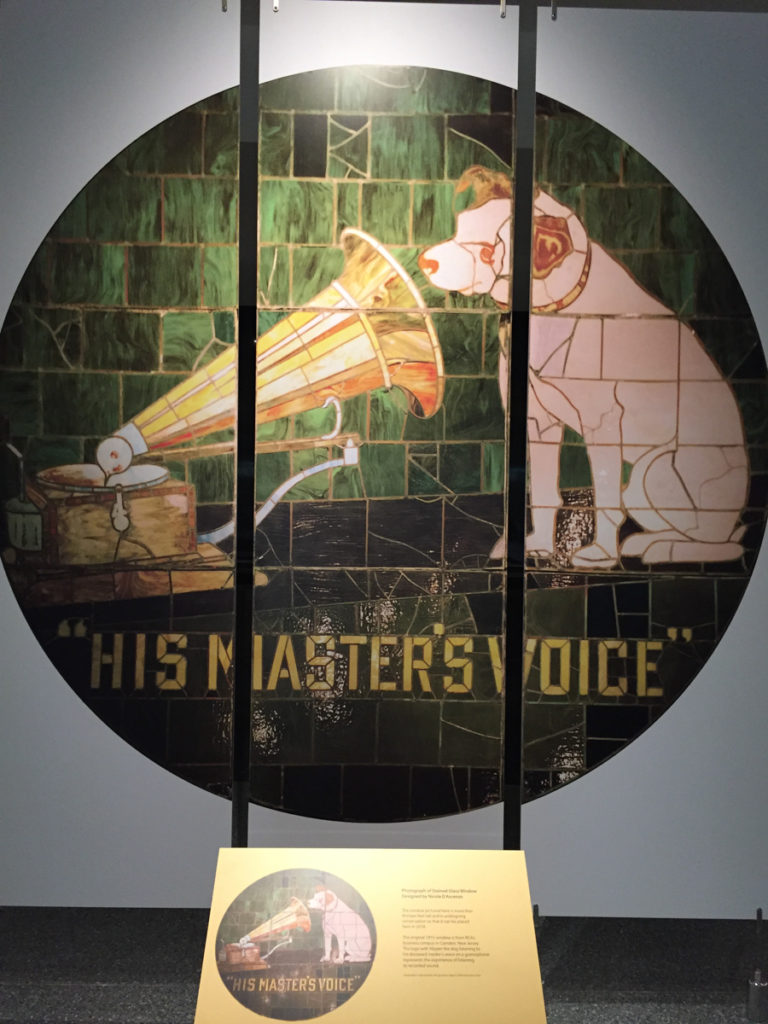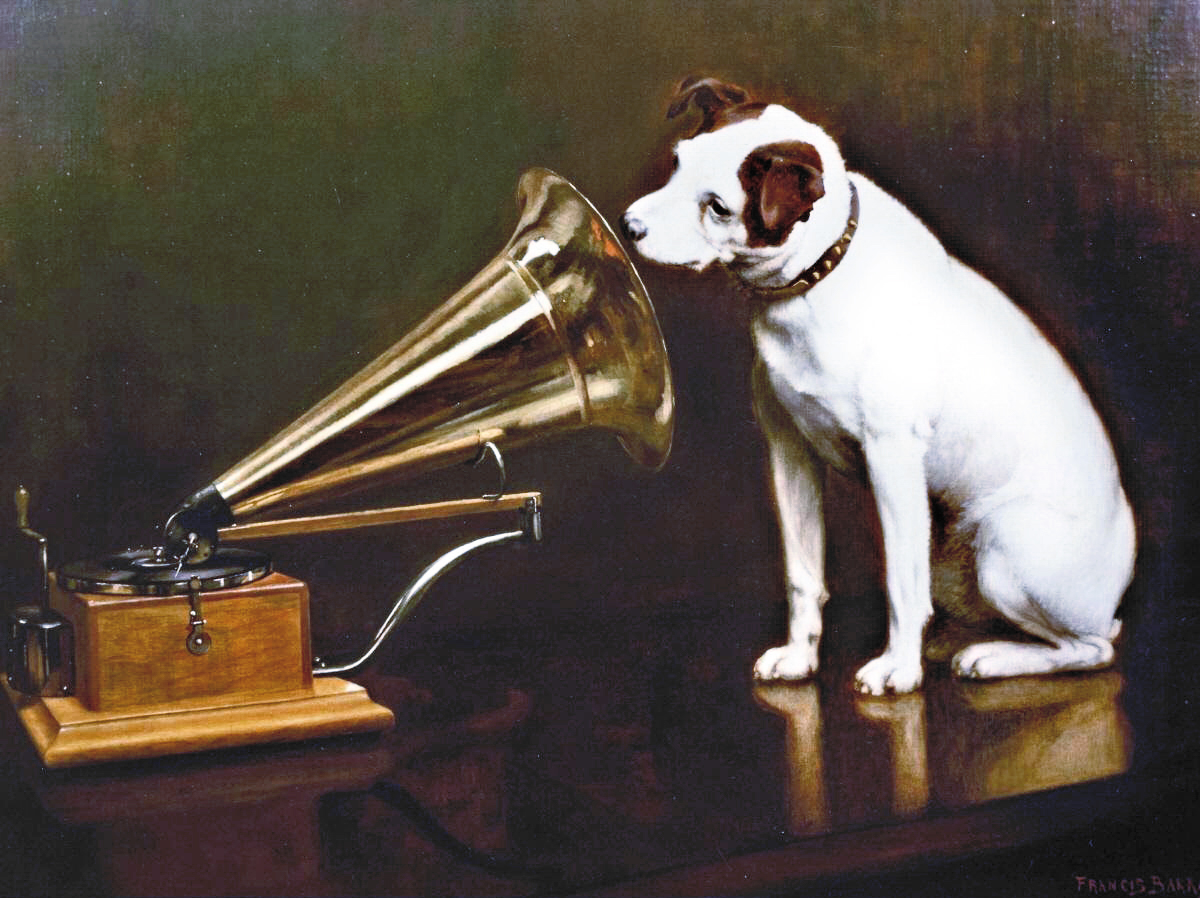It’s #NationalDogDay today so what better time to indulge in a little doggy detection?
If you love dogs – as I do – you can’t help but love the logo made up of a small terrier dog sitting in front of an old gramophone. As a curator at a museum focused on music history, I see this logo on a daily basis on the many Victrolas and 78s we have on display and in our collections. And so I was ready and willing to turn terrier myself and dig deep to find out more about that dog and one of the most recognizable logos in the world.

First things first: who is the dog in the logo? The pup in question was a real live dog owned by a theatrical scenic artist named Mark Barraud in Bristol, England in the late 1800s. He was called Nipper, inspired by his penchant for nipping people’s heels. Apparently, as with many terriers, Nipper was also a ratter of great success. He was devoted to his master, often following Barraud on stage for transformation scenes and when he was called to be recognized at the end of the play. After Barraud passed away, Nipper went to live with his brother Francis Barraud, a painter who lived in London.
While obviously a terrier, there has been some debate about Nipper’s exact breed. Some have identified Nipper as a Jack Russell, while others have claimed fox terrier or bull terrier. While looking much like a Jack Russell in the face, Nipper’s long legs seem to disprove that identity. The discussion has even found its way into the pages of the New Yorker and the website of the American Kennel Club, and many now agree that Nipper was actually a mixed-breed made up of the stately fox terrier and the charming bull terrier.
But how did Nipper end up as the model for the Victor logo? In the 1890s, Francis Barraud painted Nipper’s portrait with the dog looking at the horn of a cylinder phonograph, head cocked quizzically as if listening intently to whatever sound it was emitting. The painting was originally called “Dog Looking at and Listening to a Phonograph,” but he later paired the painting with the slogan “His Master’s Voice,” the idea being that the picture showed a dog who missed his dead owner listening to a recording of his master’s voice. Indeed, there were even stories that Nipper was found atop his master’s coffin listening to his voice through a phonograph, but this is just a tall tale.
This being the era of the new technology of phonographs and gramophones, Barraud saw an opportunity and he filed a copyright on the image in February 1899. Soon after he approached the Edison-Bell Company in England to see whether they would be interested in buying the painting to use for advertising their phonograph machines, but they didn’t bite. He then went to Emile Berliner’s Gramophone Company, also in England – executives there expressed interest as long as he could replace the phonograph in the painting with one of their gramophones instead. Easily done and agreed, Barraud was paid 100 pounds sterling for the painting and the copyright, including the slogan “His Master’s Voice.”

The design of a dog listening to a gramophone, based on Francis Barraud’s painting, was soon being used to market disc gramophones by Berliner’s company in America, and it helped to launch the products of the Victor Talking Machine Company in 1901. Nipper the trademark became a rallying cry for Victor quality: “Look for the dog, on the horn, on the record, on the cabinet” and “Don’t buy a record without a dog. Imitations have neither the dog nor the loud and clear tone of our records.”
Not only was Nipper seen on the company’s products, but he also adorned their letterhead and envelopes, along with a host of advertising and promotional materials. And of course, the company’s marketers quickly realized that Nipper was an image that would sell other things too. He could be found on reproductions of the paintings and on postcards, and as souvenirs such as paperweights and pen trays. He was even used in satirical cartoons and images such as “His Master’s Vice” where he sits amongst whisky bottles to highlight the dangers of alcohol. And today dedicated Nipper collectors look for his many manifestations in antique stores and on eBay, at collector’s fairs and while digging through estate sales. Indeed, there is an entire book to aid collectors in their search – Nipper Collectibles: The RCA Victor Trademark Dog (a big help in this blog post!).

And the painting of Nipper served as a model for other, more grandiose advertisements for the company over the years, including one of my favorites: a beautiful stained glass window from Victor’s headquarters in Camden, New Jersey, now one of the landmark objects on display in the Smithsonian’s National Museum of American History. And even more impressive: a 28-foot tall, 4-ton Nipper can also be seen on top of a warehouse in Albany, New York.

There is a long and convoluted history of the evolution of the Victor trademark bearing Nipper to the use of the logo by later iterations of the company and beyond, including RCA Victor, EMI, and HMV (standing for “His Master’s Voice”). But despite Nipper’s significance in the history of the recording industry and of advertising and branding, for me it all comes back to Nipper the dog: a dog that went from being a loyal companion to his two owners and a tenacious hunter of rats and other small beasts to an international icon, recognized the world over.
Finally, just for fun, my search for Nipper info led me to this wonderfully silly video called “Nipper Runs Amok.” Probably not the image best-suited for selling gramophones…


